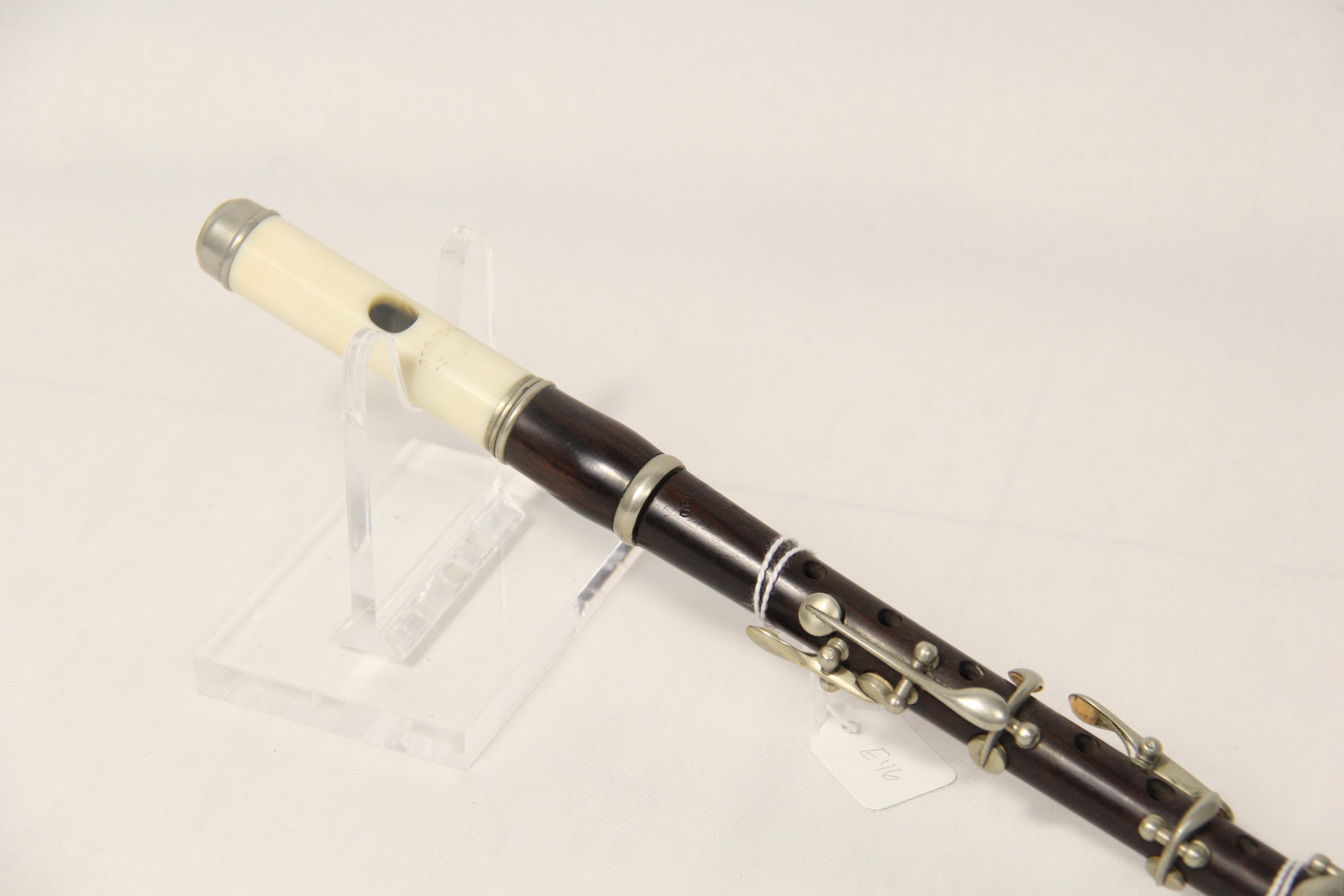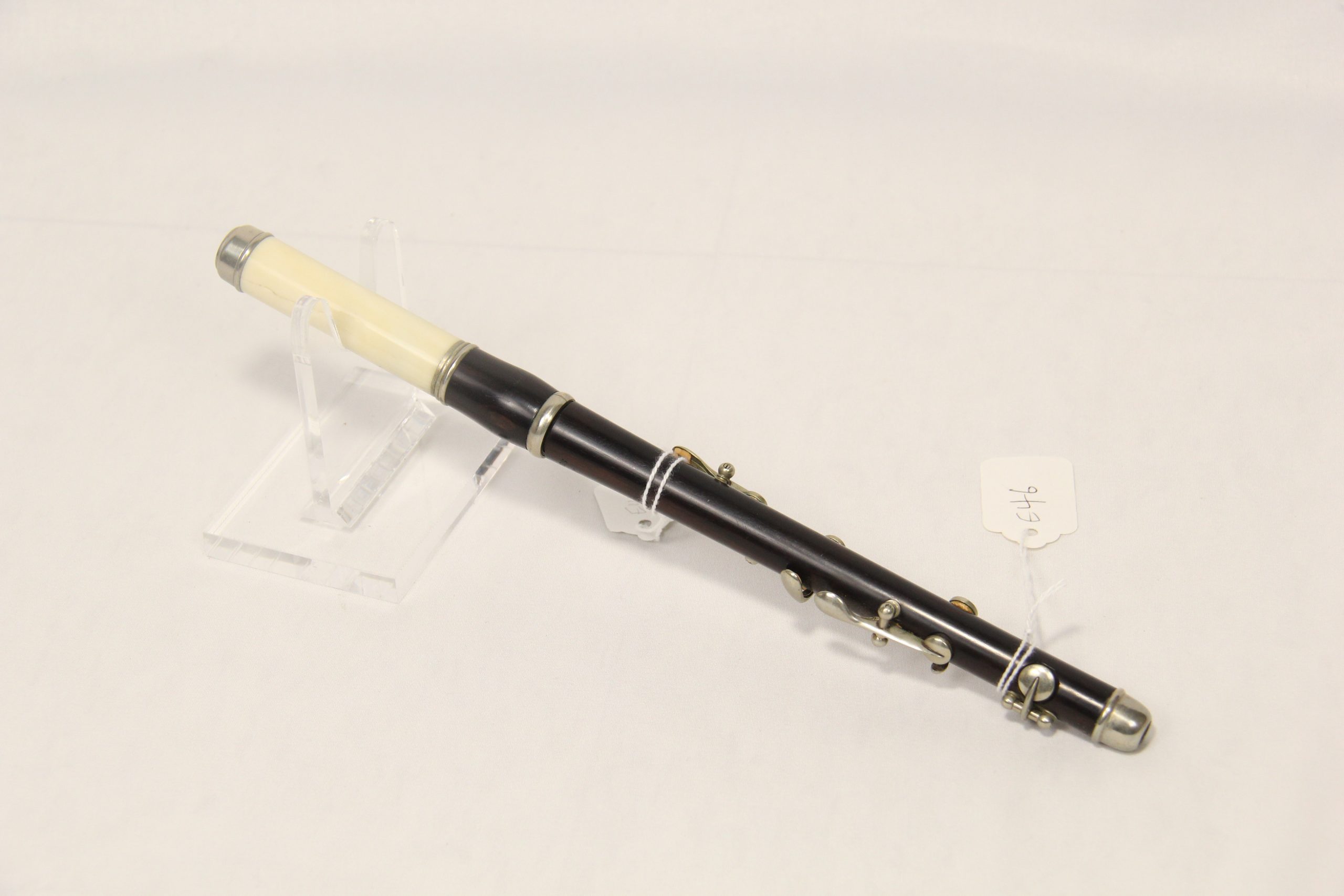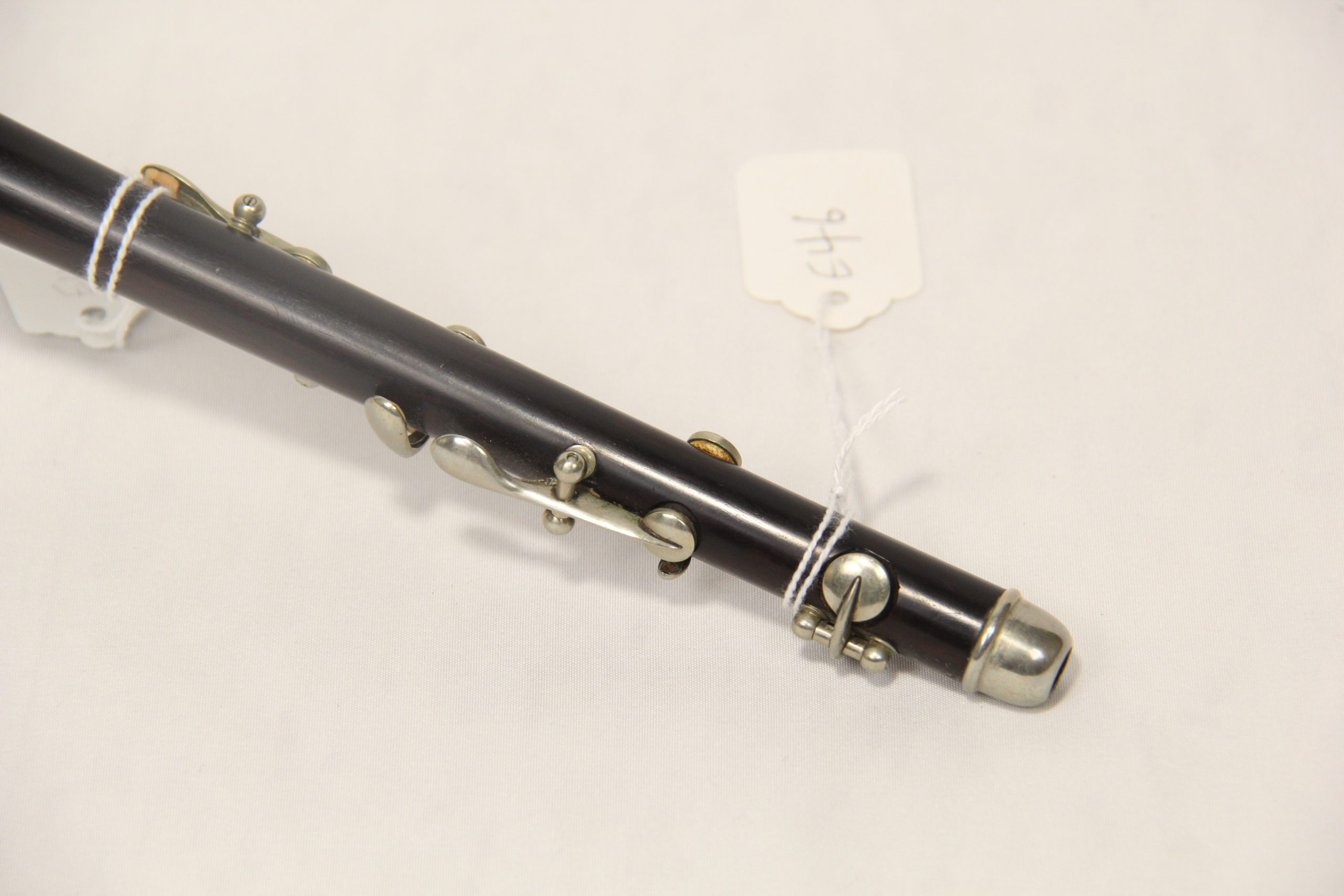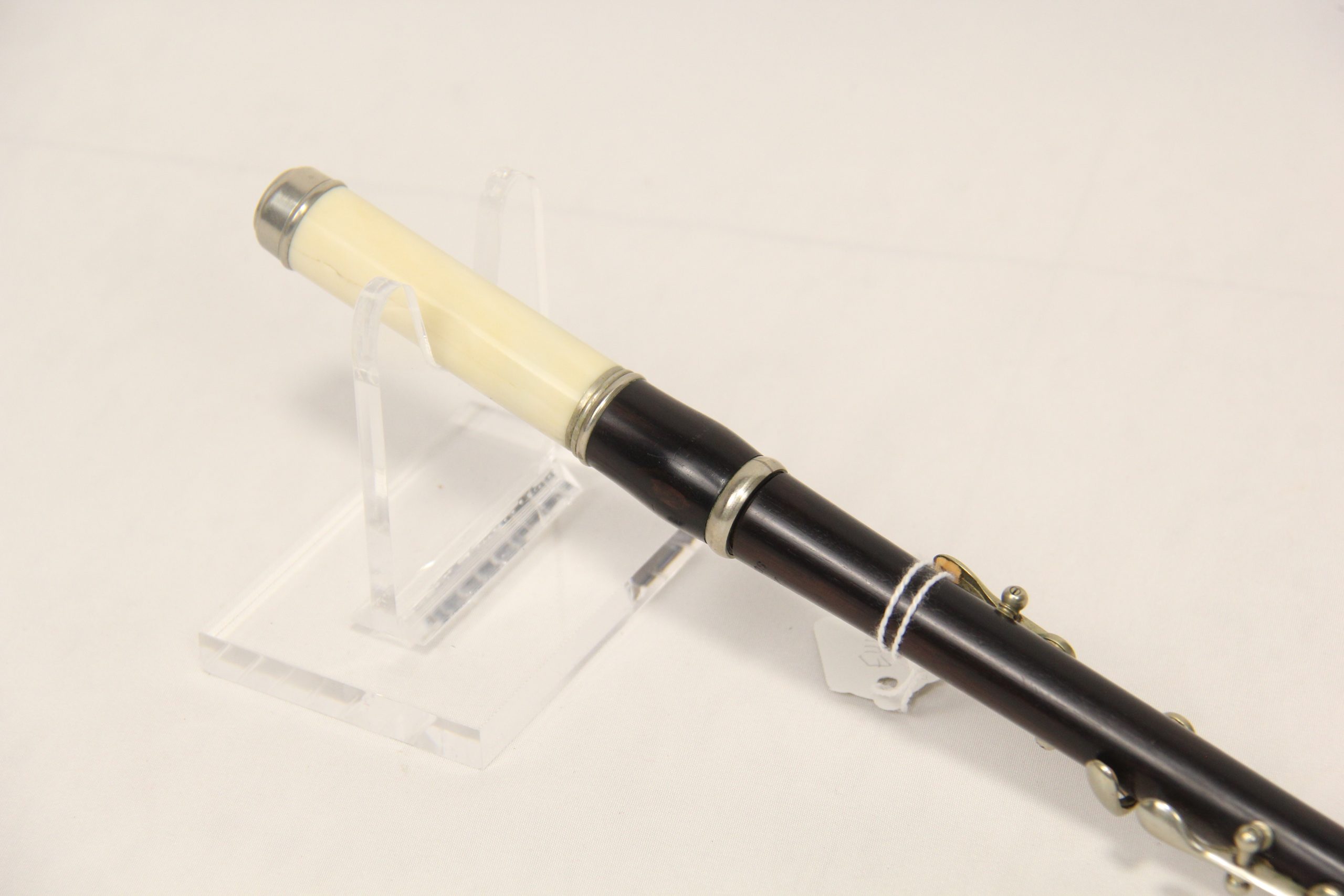Piccolo
Details
- Origin: New York City, New York, U.S.A.
- Date: Late 19th Century
- Maker: George Cloos
- Collection: E 46
Description
Has three sections. Made of blackwood with German silver caps and ferrules, an ivory head joint, and a metal tuning slide. The head joint reads “GEO. CLOOS I (monogram)” and the main wooden joint reads “GEO. CLOOS / (monogram) / Db / LP.” Has six open finger holes.
In 1857, George Cloos moved to New York City to live with his brother, Gotthard Cloos. Gotthard knew a flute maker named William Bauer, who became close friends with George. When Gotthard moved out of the city in 1870, George stayed and would live there for the rest of his lifetime. He started his own flute making company around 1862, and his two sons eventually became involved in the business.
The piccolo, meaning “small flute” in Italian, is the highest-pitched woodwind found in orchestras and military bands, first used in orchestras during the 18th century when it replaced the flageolet. This piccolo in particular was exhibited at the New York Flute Club Exhibition in 1980.
Sources
“Cloos/Crosby Fife History.” fifemuseum.com. Accessed June 21, 2022. https://www.fifemuseum.com/cloos-crosby-fife-history.html.
“Everybody Loves a Cloos Fife.” History of the Ancients, October 28, 2013. https://historyoftheancients.wordpress.com/2012/11/24/everybody-loves-a-cloos-fife/.
“Piccolo.” Encyclopædia Britannica. Encyclopædia Britannica, inc., June 15, 2021. https://www.britannica.com/art/piccolo.






